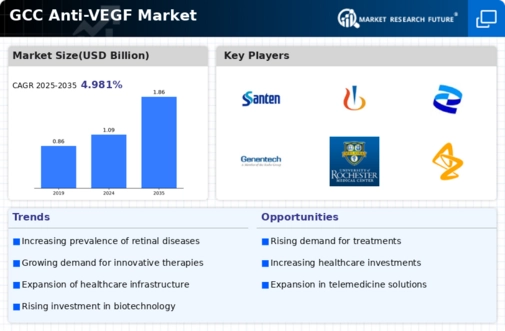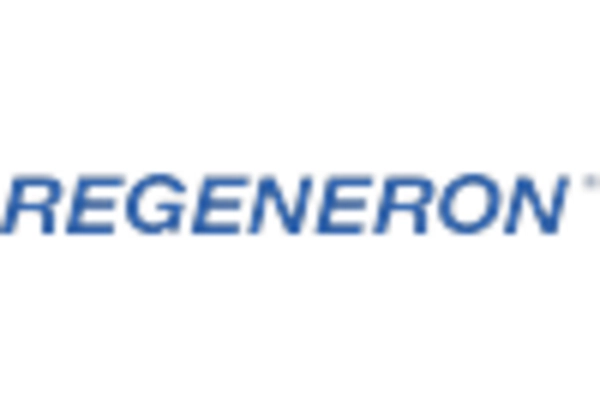Rising Healthcare Expenditure
The rising healthcare expenditure in the GCC region is a significant driver for the anti vegf market. As countries in the region allocate more resources to healthcare, there is an increasing focus on advanced treatment options for chronic diseases, including retinal disorders. Reports indicate that healthcare spending in the GCC is projected to reach $100 billion by 2025, with a substantial portion directed towards innovative therapies. This trend suggests that healthcare providers are more likely to invest in anti vegf treatments, which are essential for managing conditions like AMD and diabetic retinopathy. Furthermore, the willingness of patients to seek treatment for eye disorders is likely to increase as healthcare systems improve, thereby further stimulating the anti vegf market.
Growing Awareness and Education
Growing awareness and education regarding eye health in the GCC region are crucial factors influencing the anti vegf market. Public health campaigns aimed at educating the population about the risks and symptoms of retinal diseases are becoming more prevalent. This increased awareness is likely to lead to earlier diagnosis and treatment, which is essential for conditions that require anti-VEGF therapies. Additionally, healthcare professionals are receiving enhanced training on the latest treatment options, further promoting the use of anti vegf agents. As patients become more informed about their treatment options, the demand for effective therapies is expected to rise. Consequently, this trend may contribute to the overall growth of the anti vegf market in the region.
Government Initiatives and Funding
Government initiatives and funding aimed at improving healthcare infrastructure in the GCC are likely to play a pivotal role in the anti vegf market. Increased investment in healthcare systems, particularly in ophthalmology, is expected to enhance access to anti vegf treatments. For example, several GCC countries have launched national health programs focused on eye health, which include screening and treatment for retinal diseases. This proactive approach may lead to a higher diagnosis rate and subsequent treatment of conditions requiring anti-VEGF therapies. Additionally, public-private partnerships in the healthcare sector could facilitate the development and distribution of innovative anti vegf products. As a result, the anti vegf market may experience accelerated growth due to these supportive government measures.
Increasing Prevalence of Eye Disorders
The rising prevalence of eye disorders in the GCC region is a crucial driver for the anti vegf market. Conditions such as age-related macular degeneration (AMD) and diabetic retinopathy are becoming more common, leading to a higher demand for effective treatments. Recent estimates suggest that the incidence of AMD in the GCC could reach 1.5 million cases by 2025. This growing patient population necessitates the availability of anti-VEGF therapies, which are essential for managing these conditions. As healthcare systems in the GCC continue to evolve, the focus on improving patient outcomes through advanced treatment options is likely to bolster the anti vegf market. Furthermore, increased awareness and early diagnosis of these disorders may contribute to a surge in treatment uptake, thereby enhancing the overall market landscape.
Technological Advancements in Treatment
Technological advancements in the field of ophthalmology are significantly impacting the anti vegf market. Innovations such as sustained-release drug delivery systems and combination therapies are enhancing the efficacy and convenience of treatments. For instance, the introduction of long-acting anti vegf agents could potentially reduce the frequency of injections required for patients, improving adherence to treatment regimens. The GCC region is witnessing a surge in research and development activities aimed at creating more effective anti-VEGF therapies. This focus on innovation is expected to drive market growth, as healthcare providers seek to offer the latest treatment options to their patients. Moreover, the integration of digital health technologies, such as telemedicine, may facilitate better patient management and follow-up, further supporting the anti vegf market.

















Leave a Comment